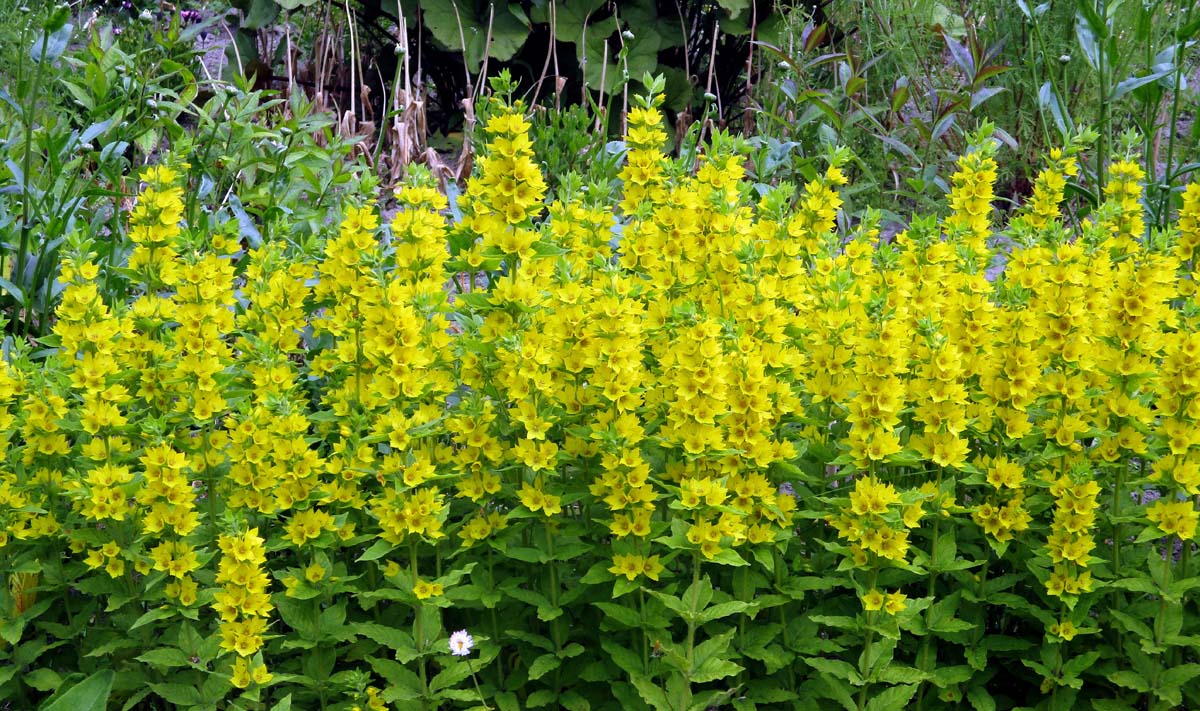Description
Lysimachia – Loosestrife –
There are about 150 herbaceous and evergreen, creeping to clump forming perennials and shrubs, in this genus. They mainly occur in damp grassland and woodlands or by water, in subtropical regions, including South Africa, and North temperate regions, with 130 of the 150 species occurring in China. They have opposite, alternate, or whorled, simple, smooth edged or sometimes toothed or scalloped, often hairy leaves. The 5 petalled flowers vary from star shaped to saucer or cup shaped, and are usually white or yellow, sometimes pink or purple, and either held solitary and axillary or borne in terminal racemes or panicles. Larger species are suitable for a moist herbaceous border, bog garden, or pond margin, or for naturalizing in a wild or woodland garden. Low growing species make a good groundcover.
Grow in humus rich, preferably moist but well drained soil that does not dry out in summer, in full sun or partial shade. Tall species may need support. Divide in spring or autumn.
Prone to rust and leaf spot.
L. punctat – Whorles loosestrife – Golden Loosestrife – Garden Loosestrife – This vigorous, erect, rhizomatous, softly hairy herbaceous perennial found from Central and Southern Europe to Turkey grows 3′ feet tall and 2′ feet wide. It produces opposite or whorled, elliptic to lance shaped, mid green leaves, to 3″ long. In mid and late summer it bears whorls of starry shaped yellow flowers, to 1″ across. May become invasive.
Zones 4-8





